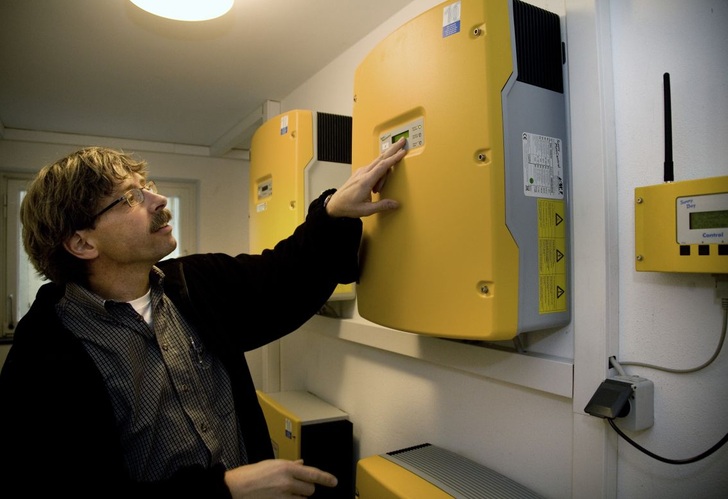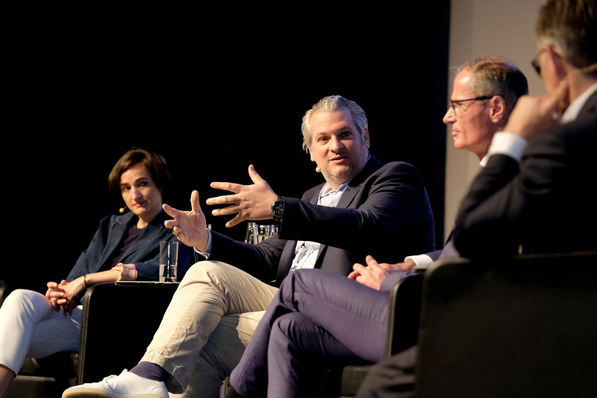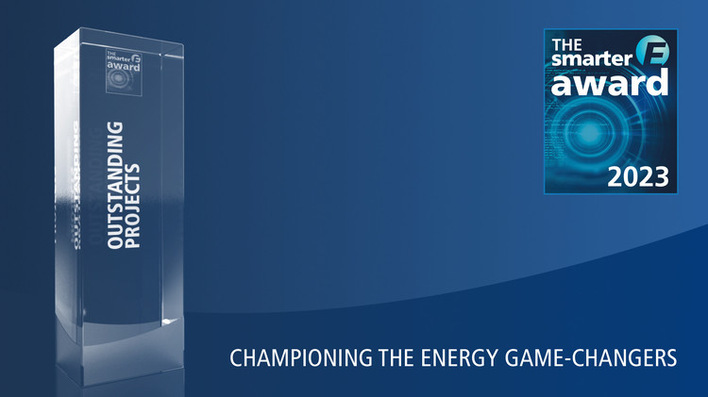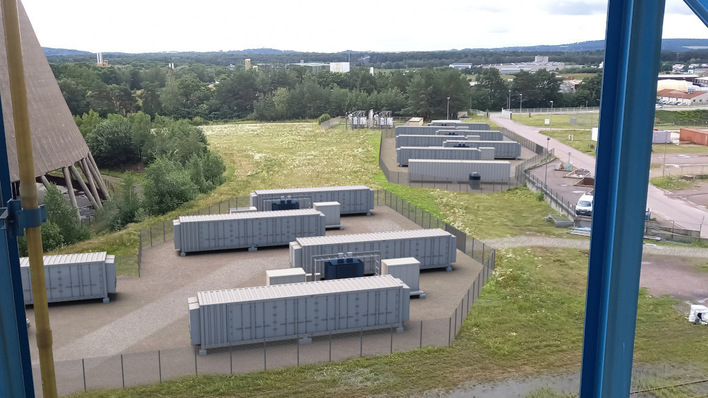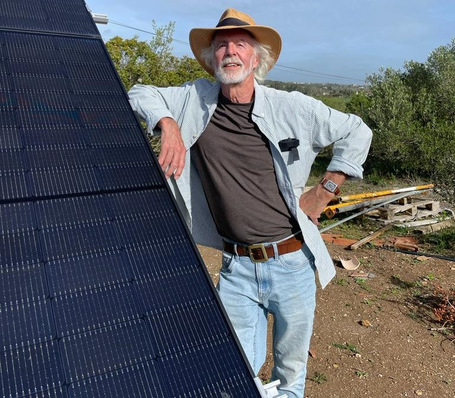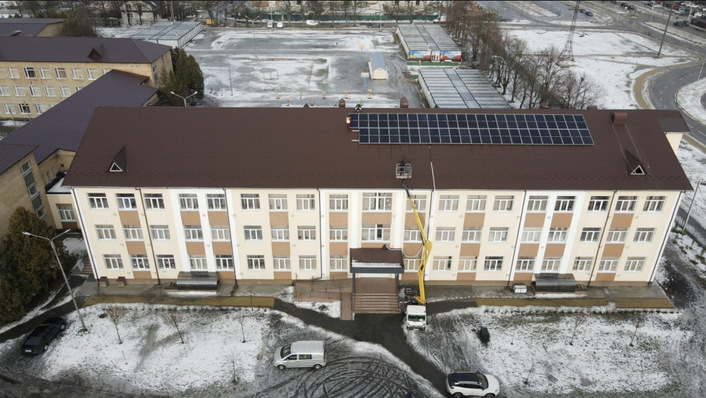At the Intersolar show in Munich, providers of inverters were clearly showing that a new trend is emerging. After a few difficult years on the brink, the manufacturers have gained renewed self-confidence. SMA and Kaco got their books in order and adapted their structures to the new realities in their heavily contested market. In addition to the battery inverter Sunny Boy Storage, SMA presented the new Sunny Tripower, which has been specifically optimised for self-consumption in a commercial environment. Kaco is currently shipping the new 50-kilowatt string inverter that had been newly presented last year.
Delta Energy is also demonstrating new self-confidence. The Taipeh-based company that originally started out as an OEM producer of inverters is now taking their own brand centre stage. In addition to inverters there will be storage units and EV charge points. And the presentation by Solarmax was also a success. Formerly known as a luxury brand from Switzerland, they presented all their major inverters, as well as a new system for storage. Refusol has also returned, now as a brand as part of Refu Elektronik (Prettl Group).
Sonnen uses electronics made by Steca
From a technological point of view there were two trends: On the one hand, commercial string inverters are becoming thinner and more precisely built. Surge protectors and switches are being integrated and the power density of inverters is going up. Diodes and power transistors made from silicon carbide are becoming increasingly important to make the electronics more heat-resistant.
And another thing can be observed: Battery inverters and string inverters are becoming one unit. Steca and Sonnen both presented the new Sonnenbatterie hybrid that can be used either for AC or DC. It has combined and integrated both inverters in one system. So far, Sonnen had always bought in their inverters from Iguana. Now this new three-phase system is made by Steca. In front of this transformerless inverter for AC conversion, the solar voltage is converted to the 48 volts of the battery by a DC-DC controller.
Similar to E3/DC’s home power station, the battery can be connected directly to the solar string. Another solution shows Solarwatt’s My Reserve: This battery system does simulate the string itself, it has a DC input and a DC output but follows the curves of the solar string. Actually the string inverter does not really "feel" that there is a battery between the modules and it's DC input. Steca used to be development partner of Solarwatt but the cooperation finished off in 2014.
Additional components are becoming more important
Sonnen is still using low-voltage batteries, even though the trend is now going towards high-voltage storage. Kostal and Fronius had already begun to go down that road two years ago. Kostal’s Piko BA has one DC controller for the solar array and another for the battery, from where it is connected to the intermediate circuit of the battery inverter, where it converts to AC. At the Intersolar, Kostal presented new functionalities for intelligent cross-linking as well as for optimising self-consumption.
Fronius has successfully introduced their Solar Energy Package (4.5 to 12 kilowatt hours) to the market. This three-phase high voltage battery with cells by Sanyo will be augmented by the Tesla Powerwall before the end of this year. The batteries are connected through either the Symo Hybrid (three phases) or the Primo Hybrid (single-phase). Both inverters control the solar strings and the batteries within the same unit.
In Munich, Fronius once again had a large and very well-visited stand. Only about a fifth of the floor space was given over to presenting string inverters as such. The majority showed axillary components such as the Ohmpilot (for converting solar electricity into hot water), the two solar batteries or Fronius’ Smart Meter that uses a sensor to connect the unit that controls self-consumption to the main power supply of the house.
Emergency power and single-phase Primo Hybrid
Almost a third of the equipment using Fronius technology is already fitted with this intelligent metring technology. However, calling it that is a little misleading to German installing companies: The Fronius Smart Meter is not a smart metre in accordance with the standards of the German Federal Office for Information Security, as codified in the Law on the Digitalisation of the Energy Transition. Even so: Fronius’s appliance makes it possible to quickly control the batteries and the output of the solar array, in order to optimise self-consumption.
As of July of this year, Fronius offers three-phase emergency power as an integral function of their battery, which is also available as a software update for already existing installations. They currently ship about two thirds of their inverters without batteries, but retrofitting the SnapINverters is easily possible at any point – by updating the control software.
A single-phase Primo Hybrid of three to 11.4 kilowatts will be introduced by mid-2017, specifically to the new markets of the UK, Scandinavia and the Low Countries, where the power supply tends to be single-phase (single-phased battery systems tend to be more common here than in Central Europe). It can integrate the batteries for AC or DC, and two MPP trackers for the solar array are possible. Again, batteries and an emergency power supply functionality can be retrofitted.
Solarmax is picking up steam again
For the first time, the Solarmax Group from Ellzee in Bavaria presented their storage unit Max Storage TP-S, built to match the TP series inverters. The energy manager MaxWeb XPN has been re-engineered. For inverters, the choice is between the three TP units with five to seven kilowatts. The basic storage element has a capacity of 3.6 kilowatt hours and can be extended in steps of 1.2 kilowatt hours, all the way up to 12. The DC-connected system achieves charging efficiency of 97 percent.
The new data logger MaxWeb XPN records current operational data and yields, and controls the flow of energy. Based on past consumption patterns and weather forecasts, the data logger determines the ideal moment for storing solar electricity, which makes for better efficiency and higher returns. The entry-level model for private households will be available in the fourth quarter of 2016. An enhancement for greater output with the MT and HT series of inverters is intended.
Customers are coming back
To encourage old Sputnik customers to come back, Solarmax put together a special partnership programme for installing companies. For instance, Elektrokass from Borken in the Münsterland has now set up a small warehouse for replacement units, to save on trips to their customers and shorten the time needed to replace defective string inverters.
Elektrokass has been using Solarmax inverters since 2002 – more than 8,000 units have been installed since then. A majority are MT series inverters. This year, they intend to sell about five megawatts’ worth. The MT series is comprised of seven individual units with an output of between six and 15 kilowatts.
More value for the installers
Two or three MPP trackers make it possible to use them in small business installations and in an agricultural setting. “What we especially like about the inverters is that even in case of innovations, the basic module can remain in place, without requiring a change in the configuration of the modules at the DC outputs,” Marco Klein-Übbing of Elektrokass explains. Further, the failure rate was very low and multiple MPP trackers allow for great flexibility in case of shading.
The company Hilker Solar from the Westphalian town of Rahden also appreciates this feature. Between 2010 and in November 2014 when Sputnik Engineering AG went insolvent, they almost exclusively used units by Solarmax. Among their favourite products is the larger HT series (30 and 32 kilowatts): Hilker Solar has been using these inverters, together with up to four MPP trackers, in larger rooftop installations and for greenfield solar parks. “Because the inverters have four discrete power units with MPP trackers, we can easily separate off parts of the installation,” Dennis Logemann, CEO of Hilker Solar, says. “That guaranties high yields and an optimum use of the available area, even in case of roofs or greenfield installations that are shaded.” (Heiko Schwarzburger)
Read more insight reports on recent trends in PV and energy storage business:
SOLARWATT appoints partners for its expanded PV and energy storage business in UK and Ireland
SMA are transforming into a full system supplier of power electronics, says CTO Juergen Reinert
Here you find all our insight reports on energy storage business at a glance

